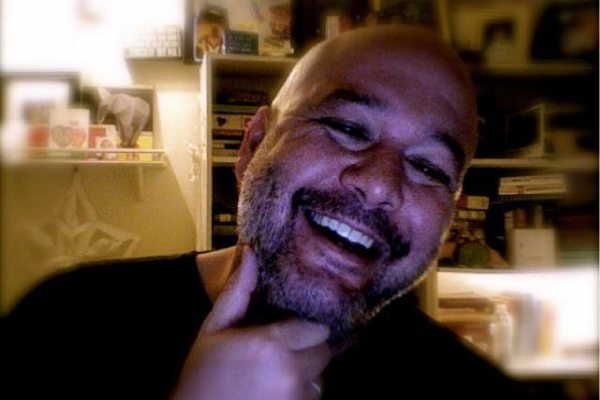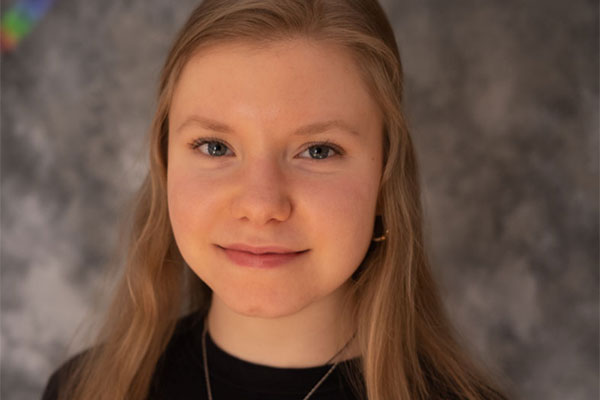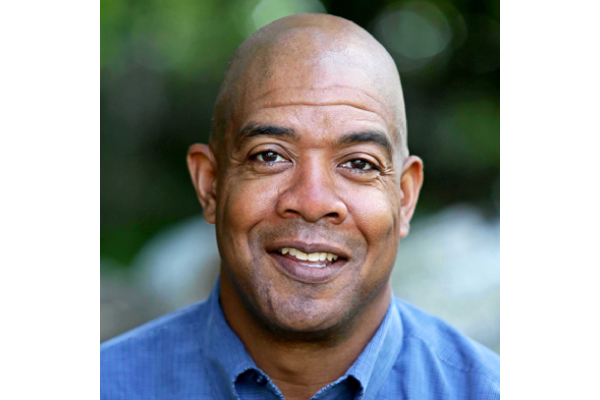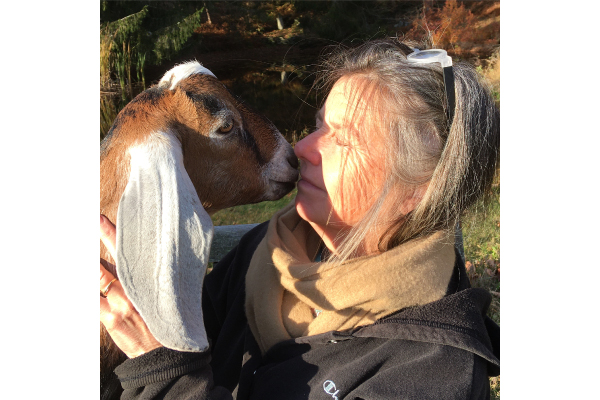Posted By: Desmond Peeples | Photo: Jody Fried, executive director of Catamount Arts. [Photo Courtesy Vermont Arts Council]
Leaders of arts and cultural organizations must draw on perhaps until now untested courage and fortitude to navigate today’s choppy seas. A viral pandemic, economic devastation, unending climate crises, and mass demonstrations to end systemic racism—all are reshaping the cultural landscape. How will these factors shape the arts now and in the future?
As part of a series featuring Vermont’s arts and cultural leaders, we’re asking how they are navigating these peculiar times. We hope that the responses might help other arts and cultural organizations chart their own voyage.
YOUR NAME and TITLE: Jody Fried, Executive Director
YOUR ORGANIZATION: Catamount Arts
YEAR YOU JOINED ORGANIZATION: 2008
What makes you hopeful for the future?
There’s an increased awareness of the importance of arts, culture and creativity to the health and well-being of our communities and economy. We’ve all learned a lot of difficult lessons recently, but one resource all sectors of the community have drawn on is arts and culture, right? All over the world, people spent quarantine watching Netflix, doing TikTok dance challenges, and playing music on porches and fire escapes. ‘
The Catamount Arts community partnered with health and social service agencies to provide art supplies and project prompts to isolated people; we invited quarantined families to make movies together in our first international film slam; we celebrated New Year’s Eve online with 8 hours of entertainment; we converted empty storefronts to art galleries; we repurposed a mall to make indoor performance safer and we brought outdoor performances to downtown sidewalks.
These strategies required some innovative and unusual partnerships, but these alliances allowed us to demonstrate over and over again that art is a necessary community infrastructure. Right here in the Kingdom, we saw arts safely entertain families and community, but we also saw arts diminish isolation, support mental health, provide jobs, promote downtown businesses, and foster compassion. Now that art is gaining rightful recognition as a vital community resource, I’m hopeful we can keep finding innovative ways to make sure it’s available to everyone, always.
What’s the most challenging part of your work currently?
Managing long-term ambiguity requires exponentially more work and mental resources. Constantly building multiple contingencies for factors out of our control is exhausting. We’re seeing this everywhere of course, with teachers, health care workers, parents, and small business owners. Everyone is doing their best to manage unprecedented and unpredictable circumstances, and everyone is tired from operating at surge capacity for nearly two years.
But I’m not talking only about COVID. The arts and culture industry operates in constant financial uncertainty. There are no big bailouts here. If you think about the creative people in our communities, the artists and arts educators, the people running theaters and galleries, doing amazing things like the Dog Chapel at Dog Mountain and Juniper Creative’s public murals and Modern Times Theater’s off-road performance buggy and the Clemmons Family Farm’s online remote learning platform and JAG’s Theatre on the Hill, you begin to appreciate what might be possible, what potential could really be tapped, if these industries weren’t working so hard just to keep the lights on.
But then look at how these creatives adapted and are still adapting to COVID: moving programming outside for three seasons, adapting classes and workshops for online learners, engaging communities safely and joyfully. I hope the work they are doing is sustainable and appreciated and that we can support these vitally important community leaders so they can continue to serve.
How have you changed as a leader in the last six months?
I’m more grounded than ever in my commitment to collaborative innovation and my love of this place we call home. Watching the Catamount Arts team this past 18 months or so has been nothing short of inspirational. While working from home with increased distractions, raising families, handling the myriad mental and physical health challenges of COVID, their steadfast dedication to creating and implementing safer program strategies; identifying and engaging isolated audiences; adapting to evolving safety guidelines again and again, it’s all been heroic.
And it’s beyond Catamount of course. Every sector of our community has reached out and partnered together in smart, innovative ways to link needs to resources. What we call the “Catamount” community extends far beyond our team of staff and volunteers and artists and patrons; it’s area educators, parents, business owners, farmers, healthcare workers, social service agencies.
One thing about a global pandemic is that global leadership isn’t really a thing; no one’s in charge, there’s no one to look to tell us what to do. And as COVID has affected different communities in dramatically different ways, community leadership has really been put in the hot seat. I’ve been so grateful to be part of a community where leadership reacts first and foremost to need: what does our community need, and how can we mine our collective resources to provide it? Collaboration, communication, and compassion, no matter what sector you’re coming from, will guide effective service to your community.
What are you prioritizing?
We need to ensure program continuity by building systems adaptable to COVID-19. In other words, hope for sun, but prepare for rain. We can’t wait for COVID-19 to be eradicated; we need to figure out how to work around it. We need updated, reliable air exchange systems, versatile indoor performance spaces, clear safety protocols, innovative programming strategies, and we need flexible mindsets and clever partnerships. Fortunately, we’ve been developing all of these resources, experimenting with pod seating, vertical concerts, drive-in performances, and of course ubiquitous online programming. At this point, adaptation is not new. We’re good at it now, and with tried-and-true collaborations across all sectors, we’re only getting better.
How do you see your relationship with your audience or constituents evolving over the next five years?
We worked hard—and quickly—to earn trust early in the pandemic, consistently prioritizing community safety and clear communication. Once we had our safety protocols down, we focused on collaboration, engaging with schools, social service agencies, struggling businesses, and other sectors to establish our availability as a wide-reaching community resource. I hope our audiences, partners, and community feel safe and confident relying on Catamount Arts to help restore health, happiness, and prosperity to the Northeast Kingdom. People will need the arts more than ever to help heal the widespread mental health issues related to the pandemic, to restore our sense of unity and hope, and to begin rebuilding toward an economically sustainable future.
How can cultural institutions and organizations participate in the current call for creating a more diverse, equitable and inclusive world?
Arts and culture institutions have the platform and responsibility to provide an accessible window to our diverse, multicultural world. Catamount Arts provides opportunities that are often absent in rural Vermont: exposure to a multitude of cultures; safe spaces for marginalized community members to convene, celebrate, and share; and a platform for artists, teachers, and partnering organizations to reach the community. Catamount is high profile, so we have an opportunity and responsibility to develop and model practices that promote diversity, equity, and inclusion.
What are some lessons learned or advice that you can share with other organizations who are grappling with the multi-faceted challenges of this time?
Catamount has been successful because of its incredible team, each with unique and influential skills. Multi-faceted challenges require multi-faceted solutions from multi-faceted teams. That means supporting every member of the team as they and their families navigate this crisis, whether that means flexible work weeks, hybrid meetings, or helping with routine life challenges like moving or navigating healthcare paperwork. Catamount builds jobs around people, we tailor the job to fit the person, not vice versa. Regardless of the pandemic, if people are worried about childcare or mental health or paying their bills, they can’t bring their best selves to the job. The Catamount team does knock-out work because we empower each other to do so. We make space for each other’s full, complex lives and ask the team, “Hey, what can we do to make this thing you’re struggling with easier, how can we help each other out here?” Our team is a microcosm of our community, and we work hard to cultivate a culture where community is everything. We’re all invested in each other’s success and well-being, and that’s a great motivator. That’s real achievement.
Anything else that you’d like to add?
COVID-19 has been a stress test on Vermont, and many of the long-standing cracks in our social infrastructure (childcare, housing, workforce, mental health, systemic inequities, etc.) have now broken wide open. While the challenges across all sectors of our communities are immense, I am confident the creative sector will play an important role in developing the innovative solutions needed to move us forward. We’re ready and we’re capable and we’re very much invested in serving our communities, in building a stronger, healthier, more equitable Vermont.
